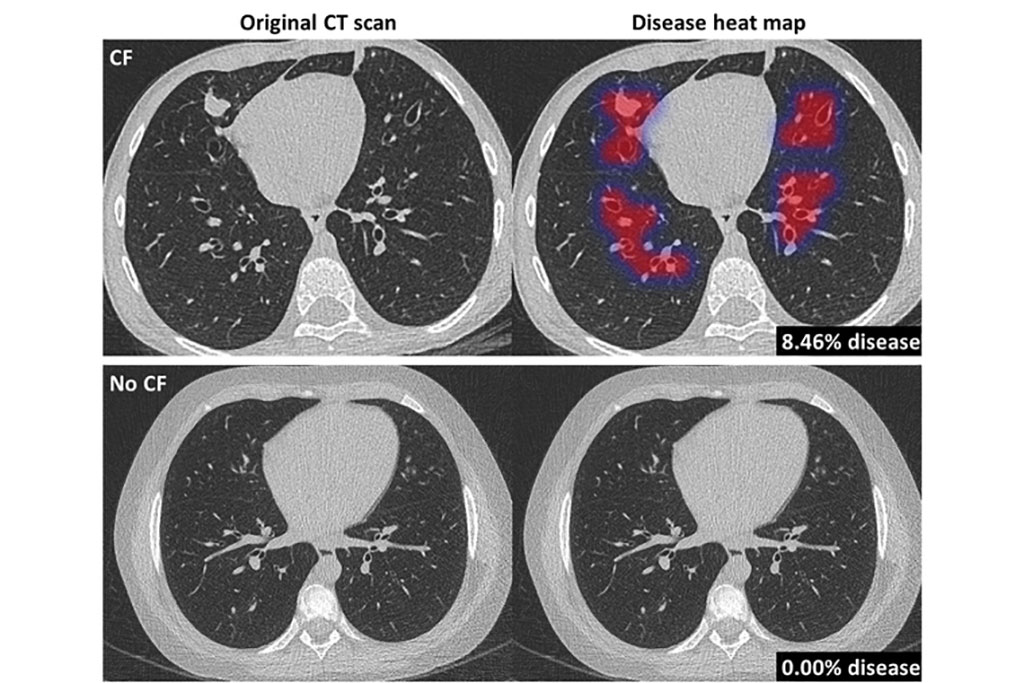AI Algorithm Automates Cystic Fibrosis CT Scan Analysis
By MedImaging International staff writers
Posted on 06 Apr 2021
A new artificial intelligence (AI) algorithm can analyze CT scans of cystic fibrosis (CF) patients in several seconds, without human interference.Posted on 06 Apr 2021
The Thirona (Nijmegen, The Netherlands) Pragma-AI is designed to automatically identify lung abnormalities related to CF, such as collapsed lung tissue and abnormal airways. Sensitive, objective information on the pattern and extent of CF lung disease is immediately available, helping clinicians monitor disease progression and supporting clinical treatment planning. Pragma-AI is part of the company’s LungQ quantification software package, which precisely detects emphysematous regions in the lungs, air-trapping, airway morphology, and fissure completeness.

Image: Original CT scan (L) and Pragma-AI overlay heat map (R) in the lungs of a CF patient and healthy control (Photo courtesy of Thirona)
“Artificial intelligence algorithms make medical image analysis easier, more accurate and more effective; but it is hard work. Developing an algorithm that works as well as, and sometimes even better than a clinician, takes time,” said Eva van Rikxoort, Managing Director of Thirona. “The algorithm will be able to quickly and accurately detect bronchiectasis and mucous quantifications in very young patients with CF, making personalized treatment easier.”
“These developments pave the way for using the PRAGMA method in both clinical trials and clinical care. It allows for large scale investigation of CF lung disease in both research studies and clinical trials. This is a crucial component in the evaluation of new expensive treatment options for patients suffering from CF,” said Professor Harm Tiddens, MD, of Erasmus Medical Center (Rotterdam, The Netherlands). “CF patient registries, collecting information on the health status of CF patients, have already shown interest in the PRAGMA-AI method.”
CF is an autosomal recessive genetic disorder that affects mainly the lungs, but also the pancreas, liver, and intestine. It is characterized by abnormal transport of chloride and sodium across an epithelium, leading to thick, viscous secretions. The name refers to the characteristic scarring (fibrosis) and cyst formation within the pancreas, first recognized in the 1930’s. Difficulty breathing is the most serious symptom, resulting from frequent lung infections that are usually treated with antibiotics and other medications.
Related Links:
Thirona














